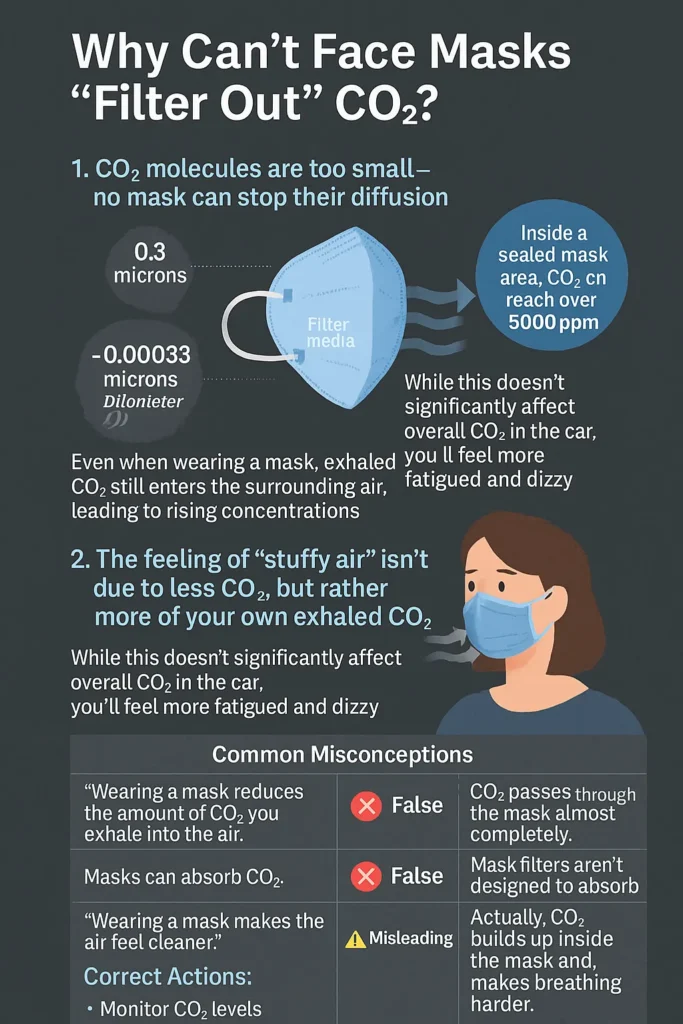1. CO₂ molecules are too small — no mask can stop their diffusion
N95, KN95, and surgical masks have filter pore sizes around 0.3 microns.
CO₂ molecules, however, are only ~0.00033 microns in diameter — far too small to be blocked.
Even when wearing a mask, exhaled CO₂ still enters the surrounding air, leading to rising concentrations.
2. The feeling of “stuffy air” isn’t due to less CO₂, but rather more of your own exhaled CO₂
Inside a sealed mask area, CO₂ can reach over 5000 ppm, much higher than the surrounding air.
While this doesn’t significantly affect overall CO₂ in the car, you’ll feel more fatigued and dizzy.
📊 Real-world research (great for awareness)
According to Japan’s Traffic Safety Research Center:
- A driver wearing a mask vs. not wearing a mask showed no significant difference in CO₂ levels inside a closed car after 30 minutes.
- In fact, multiple people wearing masks while talking or breathing heavily reduced the likelihood of opening windows, causing CO₂ levels to rise faster.
❌ Common Misconceptions
Claim: “Wearing a mask reduces the amount of CO₂ you exhale into the air.”
❌ False
Explanation: CO₂ passes through the mask almost completely.
Claim: “Masks can absorb CO₂.”
❌ False
Explanation: Mask filters aren’t designed to absorb gas molecules.
Claim: “Wearing a mask makes the air feel cleaner.”
⚠ Misleading. Actually, CO₂ builds up inside the mask and makes breathing harder.
✅ What You Should Do:
- Monitor CO₂ levels in real time
- When CO₂ exceeds 1200–1400 ppm, try: Briefly switching to outside air mode. Rolling down the windows for ventilation. Avoiding long periods of sealed recirculation with multiple passengers

Leave a Reply